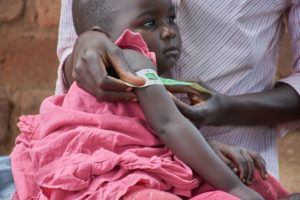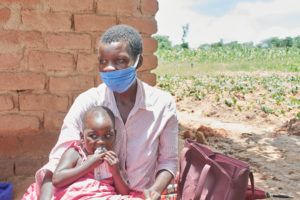 Blogs
Blogs
February 23, 2021 • 2 min read
Miriam Nyika recalls the heartache she went through when her then 22-month-old daughter, Magreth Sarahwa, fell seriously ill last November.
Magreth started losing weight when her mother finished weaning her at 18-months-old. This is contrary to the World Health Organization and the Ministry of Health and Child Care advice that breastfeeding should last up to two years of age, combined with nutritional supplementary food.

28-months-old Magreth Sarahwa is recoving from malnutrition after treatment
The little girl refused to eat porridge when Miriam, from Bikita in Masvingo, southeast Zimbabwe, stopped breastfeeding. Her weight loss and decline was rapid.
Village Health Worker (VHW), Sarah Chigamba, diagnosed that Miriam’s baby was suffering from malnutrition at an outreach clinic when she was using Mid-Upper Arm Circumference (MUAC) tapes to gauge children’s nutritional status. Magreth was referred to Ngorima clinic where she was treated. She is now recovering well at home.
Miriam’s baby was enrolled into the Nutrition Emergency Response for Early Detection and Treatment (NERET) programme being implemented by GOAL Zimbabawe in partnership with the Ministry of Health and Child Care and funded by EU Humanitarian Aid. It provides life-saving treatment for severe acute malnutrition (SAM) and moderate acute malnutrition (MAM) cases in children under five in six districts of Manicaland and Masvingo Provinces.
Malnutrition in Zimbabwe
More than 7, 700 children have been treated to date for acute malnutrition across six districts.
Chipo Dzore, a registered nurse at Ngorima clinic, explains that children being treated for malnutrition are given a peanut-based nutritious food called plumpy nut to help build them up. And women are taking a lead through the programme in highlighting cases of malnutrition coordinating with VHWs.

Miriam Nyika holding her 28-months-old daughter, Magreth Sarahwa who is recovering from malnutrition after treatment
GOAL Zimbabwe is providing resources for health workers to follow up with children living in remote areas being treated for malnutrition.
Said Chipo: “Some people live about 18km from clinics. We are grateful to GOAL Zimbabwe for facilitating visits.”
